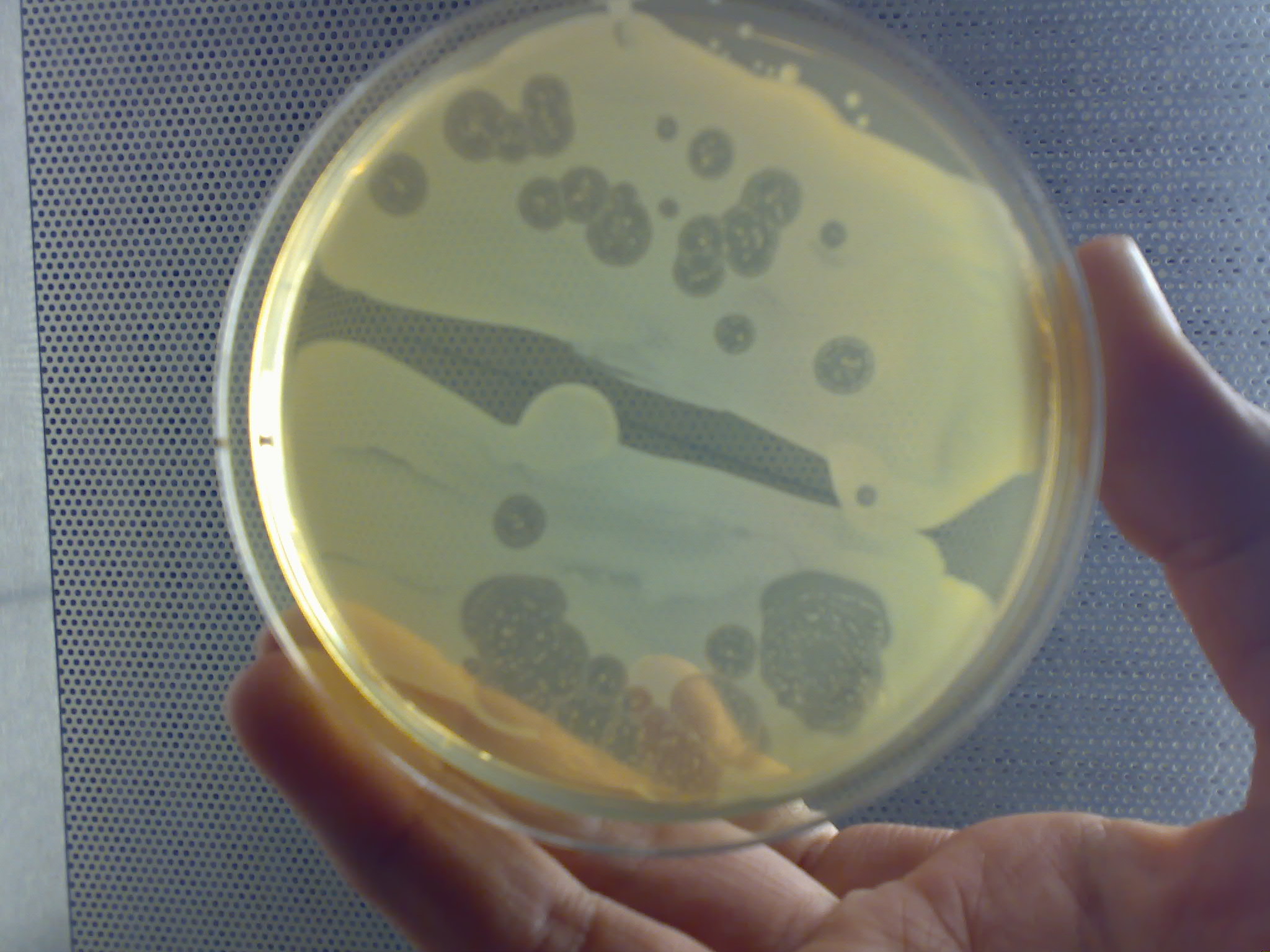|
Dictyostelium Purpureum
''Dictyostelium purpureum'' is a species of ''Dictyostelium''. ''Dictyostelium purpureum'' is a distinct species from ''D. discoideum'', although it belongs in the same phenotypic grouping. Like ''D. discoideum'', it exhibits a robust multicellular life cycle, and shares some of the early signaling molecules with ''D. discoideum''. Both species spend vegetative growth preying on bacteria in the soil, and when starved, aggregate to enter multicellular development that culminates into a fruiting body with resistant viable spores (''D. purpureum'' is so named for its strikingly purple spores), and supporting stalk structures. Altruism Wild strains of ''D. purpureum'' were taken from the Houston Arboretum to a lab where they were cultured in dishes. In each of 14 experiments, a pair of strains were placed in a dish in equal proportion, and one of the strains in each pair was labeled with a fluorescent dye. Food was withheld, causing the microbes in each dish to form dozens of slugs a ... [...More Info...] [...Related Items...] OR: [Wikipedia] [Google] [Baidu] |
Dictyostelium
''Dictyostelium'' is a genus of single- and multi-celled eukaryotic, phagotrophic bacterivores. Though they are Protista and in no way fungal, they traditionally are known as "slime molds". They are present in most terrestrial ecosystems as a normal and often abundant component of the soil microflora, and play an important role in the maintenance of balanced bacterial populations in soils. The genus ''Dictyostelium'' is in the order Dictyosteliida, the so-called cellular slime molds or social amoebae. In turn the order is in the infraphylum Mycetozoa. Members of the order are Protista of great theoretical interest in biology because they have aspects of both unicellularity and multicellularity. The individual cells in their independent phase are common on organic detritus or in damp soils and caves. In this phase they are amoebae. Typically, the amoebal cells grow separately and wander independently, feeding mainly on bacteria. However, they interact to form multi-cellula ... [...More Info...] [...Related Items...] OR: [Wikipedia] [Google] [Baidu] |
Altruism
Altruism is the principle and moral practice of concern for the welfare and/or happiness of other human beings or animals, resulting in a quality of life both material and spiritual. It is a traditional virtue in many cultures and a core aspect of various religious and secular worldviews. However, the object(s) of concern vary among cultures and religions. In an extreme case, altruism may become a synonym of selflessness, which is the opposite of selfishness. The word "altruism" was popularized (and possibly coined) by the French philosopher Auguste Comte in French, as ''altruisme'', for an antonym of egoism. He derived it from the Italian ''altrui'', which in turn was derived from Latin ''alteri'', meaning " other people" or "somebody else". Altruism in biological observations in field populations of the day organisms is an individual performing an action which is at a cost to themselves (e.g., pleasure and quality of life, time, probability of survival or reproduction), ... [...More Info...] [...Related Items...] OR: [Wikipedia] [Google] [Baidu] |

